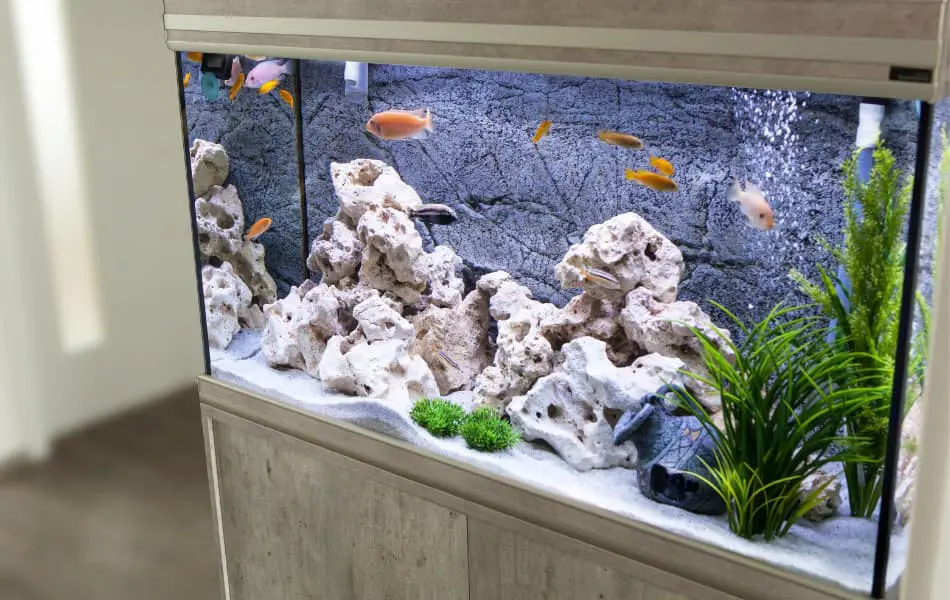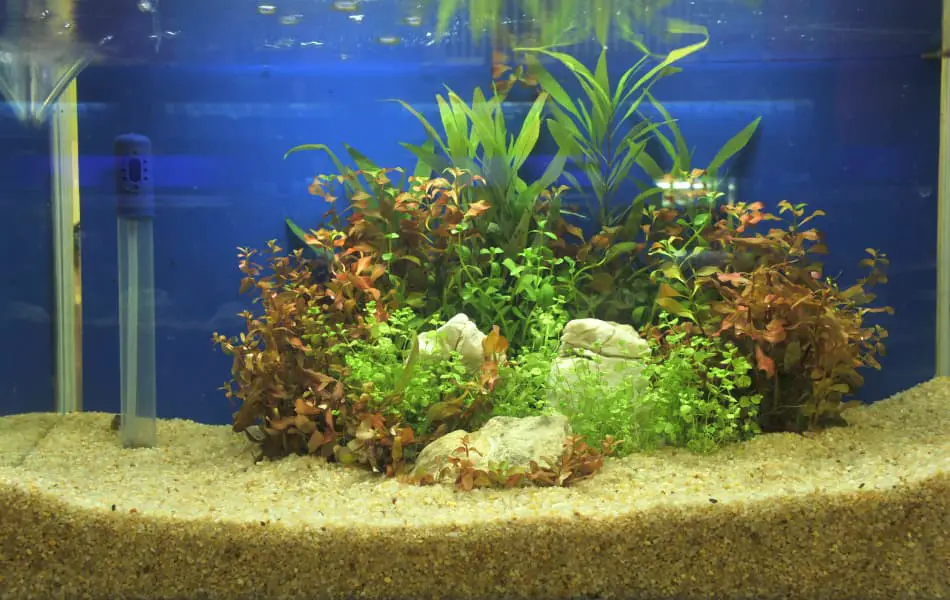
Who doesn’t like little fish? Having a fish tank at home or your workspace can bring you a lot closer to nature. It does not just decorate the interior of your living space, but it also calms you down. After all, fish are great pets, and pets are real stress-busters.
Imagine coming home after a tiring day at work, and you can sit next to your fish tank and look at the fish and feed them. Believe it or not, it is relaxing. If you love pets but can’t have them because you’re allergic to fur, a fish tank is a great alternative. It provides a learning opportunity for the entire family, including your kids.
This article will look at how amateur aquarists can set up their fish tanks and introduce fish into the tank.
So, here is a step-by-step guide that will help you set up a home aquarium for beginners:
Decide where you want to keep the fish tank
The first and foremost thing that you need to think about if you want a fish tank at home is the place where you’re going to set it up. Choosing the right spot is very important when it comes to setting up your aquarium.
If you choose a place that’s too sunny, the algae and plant growth inside the tank will be beyond your control, and you will have a tough time getting rid of them. So, the spot should preferably be somewhere close to an interior wall. Make sure that you leave a gap of at least 5 inches for the filter.
Make sure that the fish tank is near a place where there’s consistent temperature. This means no setting it up under an air vent or just below a window. Setting up a fish tank next to an air vent or a window can disrupt the temperature balance of the water, and it can also cause the dust from the air vent to fall into the water. You can always choose a closed fish tank, but nothing terrible falls into it if you have an open one.
Furthermore, make sure that your floor is strong enough to handle the weight of a filled fish tank. Filled fish tanks can be cumbersome even though they may not look huge. Also, there must be a plug point near the tank to connect the air pump or the filter.
Choose a fish tank according to the space available
Now that you know where you should set your fish tank, decide the fish tank size you want. Smaller fish tanks are easy to handle, but they hardly provide any space for the fishes to swim around.
Larger fish tanks have more room for plants and add-ons. If you want to buy fish that can grow huge with time, you should get a bigger fish tank.
You need to know the amount of waste produced by the fish you wish to keep, and the size of the tank should be according to this. Different types of fish have different amounts of waste.
Buy a strong stand

The weight of a medium-sized fish tank is a lot more than you may think it is. This is why it is essential to buy a metal or wooden stand to keep your fish tank on. Never keep a freshwater aquarium set up on a glass table and never leave a side of the tank protruding outside the table.
You may feel that TV stands, flimsy wooden tables, and dressers may be strong enough to support the fish tank’s weight, but they are not. This is one of the most critical things in setting up freshwater fish tanks for beginners.
Choose the filter system
You can either use an under-gravel filter or a power filter for your tank so that it stays clean. If you want to add finer particles like sand to your fish tank, you must avoid the under-gravel filter.
A power filter that the side of the fish tank can hang is a better choice for beginners who are setting up a tank. This is because there are a lot of risks involved while using an under-gravel filter. For example, you will have to vacuum your gravel regularly so that they don’t clog your under-gravel filter. In case it gets blocked, it will turn your fish tank into a killing zone.
Additionally, if you’re getting this type of filter, make sure it’s powerful enough to filter the entire fish tank.
Install the filter system
The installation of the filter system depends on the type of filter that you have chosen. If you’ve chosen an under-gravel filter, put the filter plate in and make sure that you fix the lift tubes well. Do not turn on the filter until the tank is filled with water.
If you’ve got an external power filter, fit it outside the tank and turn it on only once the tank is filled with water. Starting a fish tank for beginners can be pretty overwhelming, and to know better about the filter system, you can do a bit of research on the internet.
Adding gravel for the base layer

One of the essential steps in setting up a fish tank is setting up the base layer. If you want to have a substrate, you must have at least 2-3 inches of gravel in the bottom part of your fish tank so that the fishes can maintain their orientation in the water. Ensure that you use only good quality gravel and not the ones that look good but are bad for your fishes’ health.
Sand is also an excellent option for the bottom layer of a fish tank, but you will have to stir it every once in a while to stay clean and not create a killing spot for the fishes. Sand is a bit high maintenance because it can get sucked up into your filter, ruin your fish tank, and kill your fishes.
If you’re thinking about getting plants for your fish tank, make sure that the substrate is appropriate for plant growth. The best substrate you can get if you want to grow plants in the tank are Amazonia and Azoo substrates.
Ensure that you clean the gravel or sand with fresh water thoroughly before adding it to the fish tank. Never use soap to clean the gravel or sand since soap is very harmful to your fishes’ health. Pour the substrate slowly, little by little. If they fall too fast, they may scratch the glass, which will ruin the beauty and visibility of your fish tank.
Freshwater fish tank beginners need not be fancy, and you can always start it safe and straightforward.
Adding water, de-chlorination, and heating
Well, try adding water to your tank to check for leaks. Wait for half an hour and check the tank for any leaks. Ensure that you have a sealant with you to fix the leaks right away in case there are any.
Once you’ve spread the gravel or sand, fill the water up to the rim of the tank. Try to fill the water from one corner of the tank so that the water doesn’t fall from a height and splash the gravel and sand everywhere. Leave a gap of at least four inches between the waterline and the rim of the glass tank. You never know when your fishes will jump, and if the water level is too close to the rim, they may fall out of the tank and die. You can fill it closer to the rim if you have a covering over the tank.
Once you’ve filled the tank with enough water, turn on the filter. Ensure that the filter is working correctly and let the water regulate for about an hour in the tank. Check the temperature and the clarity of the water.
If you want to maintain a constant temperature in your fish tank or live in a place where it’s too cold, you should get a heater to maintain optimal temperature for your fish. Make sure you use a good-quality heater so that it doesn’t alter the temperature drastically due to power fluctuations.
Tap water may contain chlorine, and it can seriously impact the health of your fishes. Follow the instructions on the de-chlorinator bottle carefully and use it to treat tap water. You may have to remove the activated carbon part of your filter for a while when you’re doing this process since the filter may remove the chemical before it circulates well in the tank. You can also add a bacterial catalyst to the water to encourage the growth of good bacteria.
Plants and decorations
You can add plants and decorations that are meant for freshwater aquariums and not anything else to your fish tanks. Some plants help the fish stay healthy, but fish like the goldfish may mess them up.
You can also add driftwood and other appropriate decorations that will not be toxic for the fish to the tank. Choose the plants according to the type of fish that you want to get. Fix the roots of the plants in the gravel or sand and make sure that they are planted well.
Fish may swim around frantically sometimes, so make sure that none of your installed decorations are sharp enough to hurt them. Also, avoid plastic decorations of lousy quality since they release toxins into the fish tank water after a while.
If you want a fancy aquarium rather than a natural-looking one, you can go for gravel and decoration items that complement the color of the fish that you’re going to get.
Bring the fish in

Once everything is perfectly set, turn on the heater and filter again. Ensure that the water is well circulated and the temperature is regulated before you add in the fish. It’s better to wait for a few hours before you put the fishes in.
Try to get all the setup work done a day before getting the fish from the pet store. Do not start setting the tank after you buy fishes from the store since it is harmful to keep them for long in the plastic bags. Keep the bag of fishes in the tank for about 20-30 minutes before you open the cover and let them into the tank. This is to even out the temperature so that the fishes won’t experience a sudden change in the temperature.
Not all fishes can live well together. Try to learn more about what breeds of fish you want and which are the ones that are aggressive or semi-aggressive.
Also, do not add all the fish into your fish tank at once. Try to introduce the smallest fish first and move to the bigger ones after two to three days. Introduce the biggest fish at last and make sure that none of them are aggressive to each other.
Conclusion
There you go! That’s all the information on setting up freshwater fish tanks for beginners. Don’t fret or stress; take it easy.
Make this journey easy and enjoyable for you. Trust me! You will achieve better results with a clear head or peace of mind. Ask any questions that you may still have or share more tips in the comment section below.